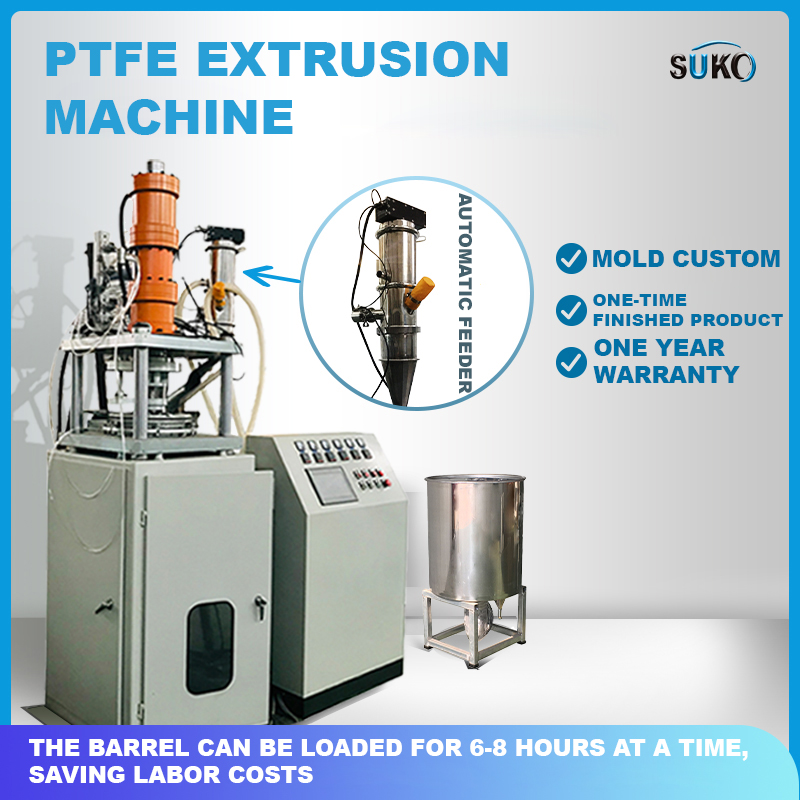Introduction:
Teflon®, also known as PTFE (polytetrafluoroethylene), is a versatile fluoropolymer renowned for its exceptional mechanical, thermal, and electrical properties . One of the manufacturing processes used to shape Teflon into various objects is extrusion. In this article, we will delve into the world of Teflon extrusion, exploring the process, its applications, advantages, and disadvantages.

Understanding Teflon Extrusion:
Extrusion is a highly efficient manufacturing process that involves pushing a base material through a die of a specific shape and profile . Teflon extrusion uses this methodology to create objects with a fixed cross-sectional profile using PTFE as the base material. The process begins with PTFE powder being mixed with a liquid processing aid, such as naphtha, to form a paste-like consistency . This paste is then forced through a pre-shaped die using pressure and temperature control, resulting in the desired shape and size of the extruded Teflon product.
Applications of Teflon Extrusion:
Teflon extrusion finds widespread applications across various industries due to the unique properties of PTFE. Here are some notable uses:
Wire Coatings: Teflon extrusion is commonly employed to apply a thin and uniform coating of PTFE onto wires, providing electrical insulation and heat resistance, making them suitable for high-temperature environments .
Tubing and Hoses: The extrusion process allows the production of PTFE tubes and hoses with precise dimensions, excellent chemical resistance, and nonstick properties. These are widely used in industries such as automotive, chemical, and medical .
Seals and Gaskets: Teflon extrusion enables the creation of custom seals and gaskets with intricate profiles and tight tolerances. PTFE’s low friction and chemical resistance make it ideal for sealing applications in various industries .
Advantages of Teflon Extrusion:
The utilization of Teflon extrusion offers several advantages:
Versatility: Teflon extrusion allows for the production of complex shapes and profiles, providing design flexibility for different applications.
Nonstick Properties: PTFE’s inherent nonstick nature ensures easy release of materials, reduced friction, and improved wear resistance.
Chemical Resistance: Teflon extruded products exhibit excellent resistance to various chemicals, acids, and solvents, making them suitable for corrosive environments.
Disadvantages of Teflon Extrusion:
While Teflon extrusion offers numerous benefits, it is essential to consider some limitations:
High Processing Temperatures: The extrusion of PTFE requires elevated temperatures, typically in the range of 327-380°C (620-716°F), which necessitates specialized equipment and expertise.
Limited Color Options: PTFE is naturally white, and achieving color variations through extrusion can be challenging.
Conclusion:
Teflon extrusion is a valuable manufacturing process that enables the creation of custom-shaped products using PTFE. With its exceptional properties and versatility, Teflon extrusion finds applications in wire coatings, tubing, seals, and gaskets. While it offers advantages like nonstick properties and chemical resistance, it does require high processing temperatures and has limitations in color options. Nevertheless, Teflon extrusion remains a vital technique in various industries, contributing to the widespread use and success of Teflon as a fluoropolymer.
